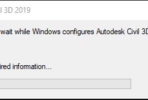If you have lisp routines that you want to make available in each drawing session, forget the “Startup Suite” and load them using the “acaddoc.lsp” file. “acaddoc.lsp” is not included with AutoCAD, you create it yourself. But it is nothing more than a plain lisp file, except that the first one found at drawing startup (just put it in your support file search path), is loaded automatically each time a drawing is opened.
Why use this approach instead of the “Startup Suite”? Ease of migration for one thing. When you upgrade from your current version of AutoCAD to the next version, simple add the path of your “acaddoc.lsp” file to the support file search path and your done.
The second reason is that if you have more than one AutoCAD install to manage, using a networked copy of “acaddoc.lsp” means that you can control each machine using a single file as opposed to using the “Startup Suite” where your startup routines would have to be updated one machine at a time.
Remember that the file “acad.lsp” can contain startup code also, but “acad.lsp” is only loaded once per session of AutoCAD (assuming that the system variable ACADLSPASDOC is set to it’s default value of zero). Each drawing has it’s own lisp environment so it’s necessary to load your startup lisp routines using “acaddoc.lsp” so that they will be loaded for each drawing.
Since “acaddoc.lsp” is like any other lisp file, it can contain functions and/or lisp code itself. Be careful when including lisp code because the (command) function should not be called until after AutoCAD initializes. You can do this safely by using the (s::startup) function. More on that next time.
Here is a sample “acaddoc.lsp” file.
;;; acaddoc.lsp (load "mylisp") (load "another_lisp") (load "\\\\server\\share\\a_lisp_and_specify_the_path") (setvar "blipmode" 0) (setvar "highlight" 1) ;;; end acaddoc.lsp



